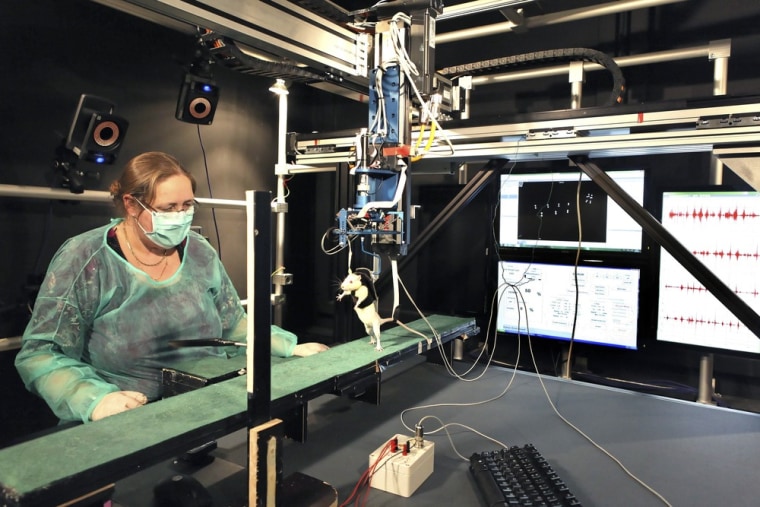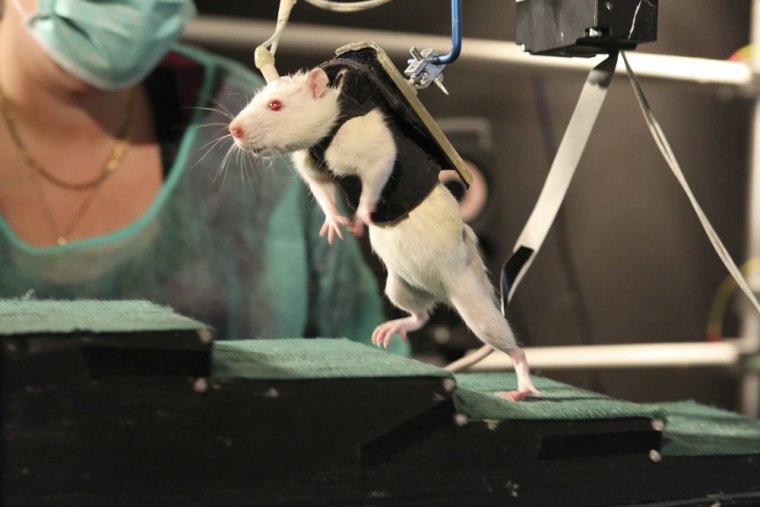Scientists in Switzerland have restored full movement to rats paralyzed by spinal cord injuries in a study that spurs hope that the techniques may hold promise for someday treating people with similar injuries.
Gregoire Courtine and his team at Ecole Polytechnique Federale de Lausanne saw rats with severe paralysis walking and running again after a couple of weeks following a combination of electrical and chemical stimulation of the spinal cord together with robotic support.
"Our rats are not only voluntarily initiating a walking gait, but they are soon sprinting, climbing up stairs and avoiding obstacles," said Courtine, whose results from the five-year study will be published in the journal Science on Friday.
Courtine is quick to point out that it remains unclear if a similar technique could help people with spinal cord damage but he adds the technique does hint at new ways of treating paralysis.
Other scientists agree.
"This is ground-breaking research and offers great hope for the future of restoring function to spinal injured patients," said Elizabeth Bradbury, a Medical Research Council senior fellow at King's College London.
But Bradbury notes that very few human spinal cord injuries are the result of a direct cut through the cord, which is what the rats had. Human injuries are most often the result of bruising or compression and it is unclear if the technique could be translated across to this type of injury.

It is also unclear if this kind of electro-chemical "kick-start" could help a spinal cord that has been damaged for a long time, with complications like scar tissue, holes and where a large number of nerve cells and fibres have died or degenerated.
Nevertheless, Courtine's work does demonstrate a way of encouraging and increasing the innate ability of the spinal cord to repair itself, a quality known as neuroplasticity.
Other attempts to repair spinal cords have focused on stem cell therapy, although Geron, the world's leading embryonic stem cell company, last year closed its pioneering work in the field.
The brain and spinal cord can adapt and recover from small injuries but until now that ability was far too limited to overcome severe damage. This new study indicates that recovery from severe injury is possible if the dormant spinal column is "woken up".
Norman Saunders, a neuroscientist at the University of Melbourne in Australia, said in an emailed statement reacting to the study that although it remains to be seen whether the technique can be translated to people, "it looks more promising than previously proposed treatments for spinal cord injury".
Bryce Vissel, head of the Neurodegenerative Diseases Research Laboratory at the Garvan Institute of Medical Research in Sydney, said the study "suggests we are on the edge of a truly profound advance in modern medicine: the prospect of repairing the spinal cord after injury".
Courtine hopes to start human trials in a year or two at Balgrist University Hospital Spinal Cord Injury Centre in Zurich.
